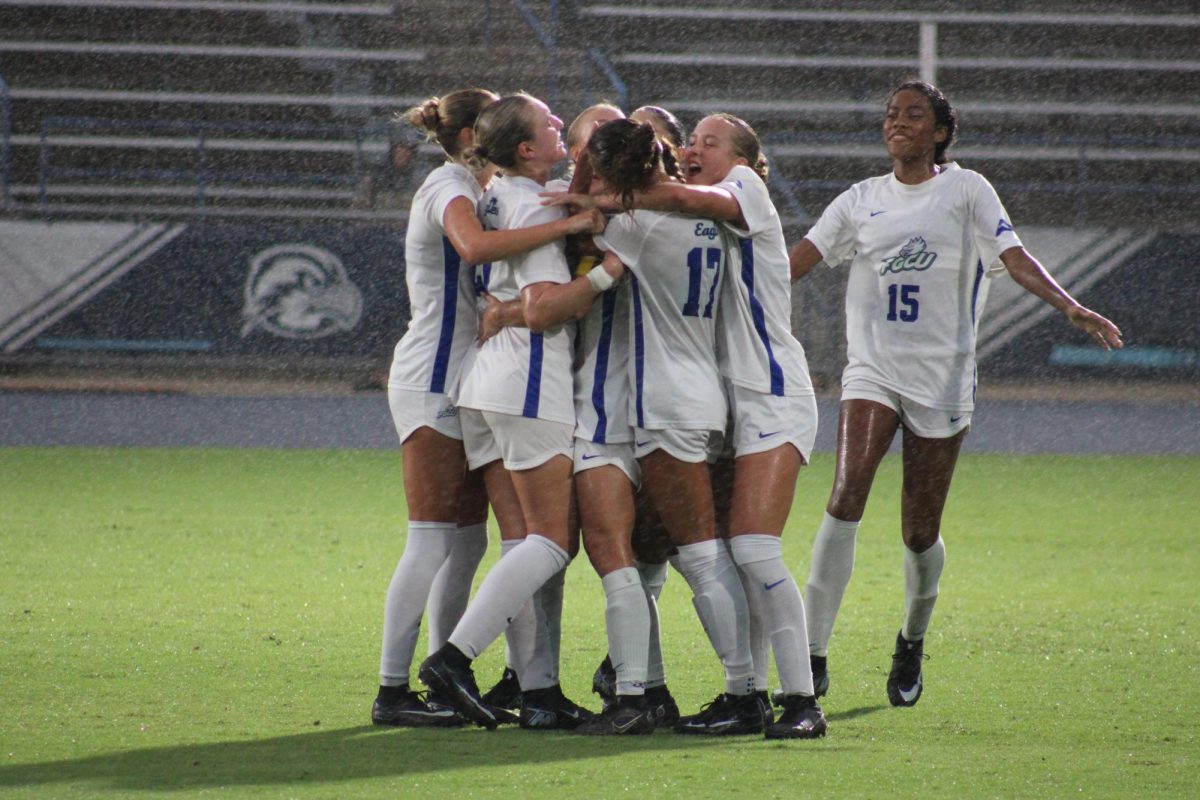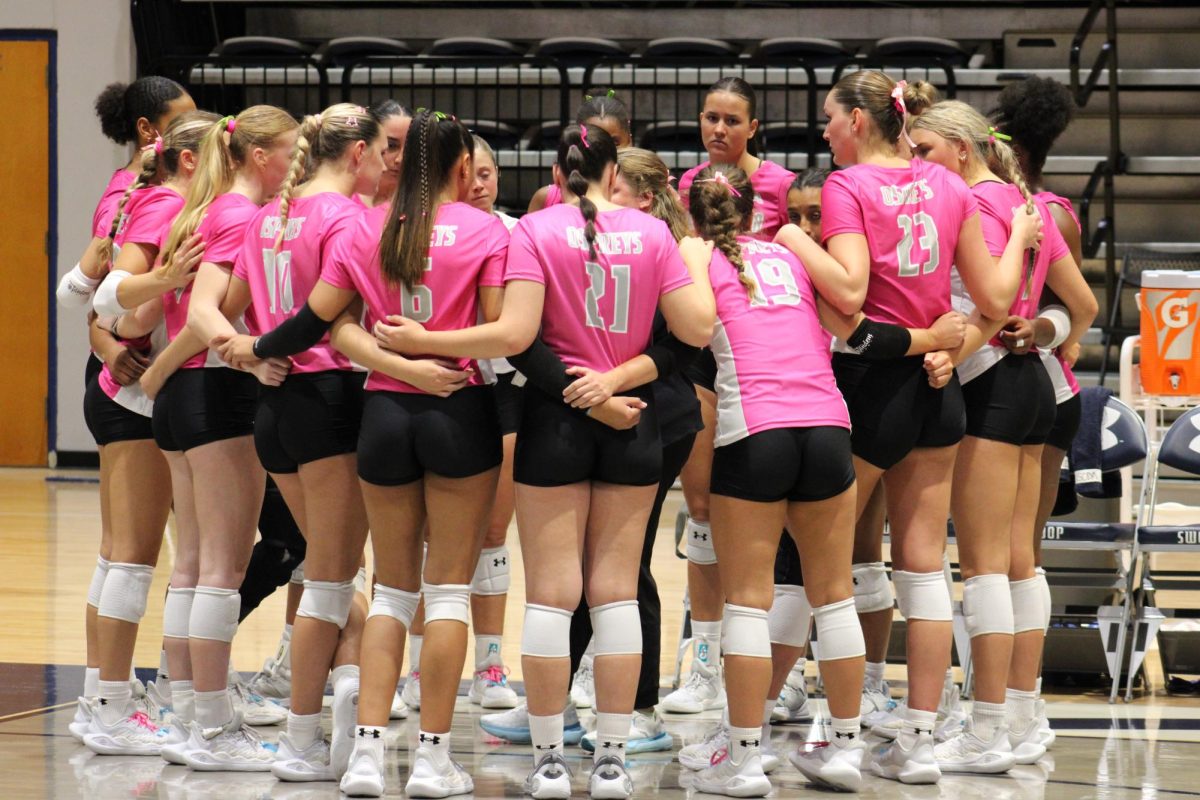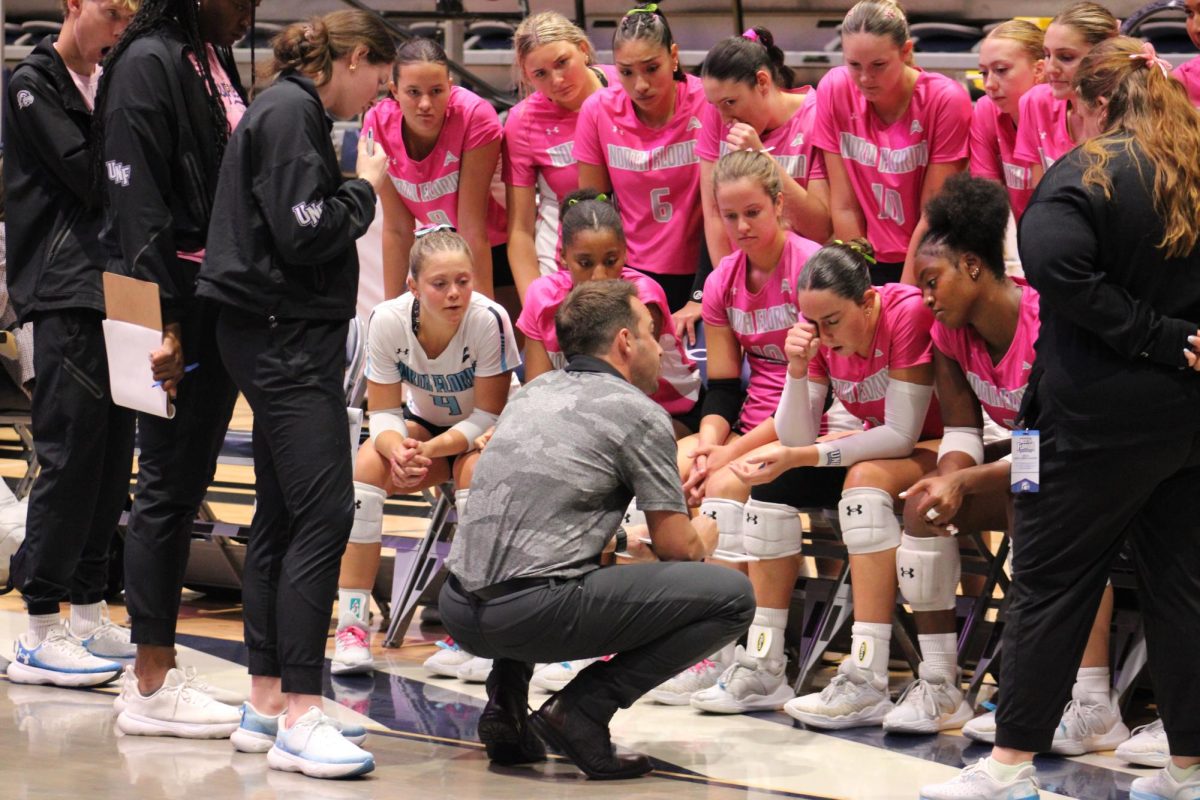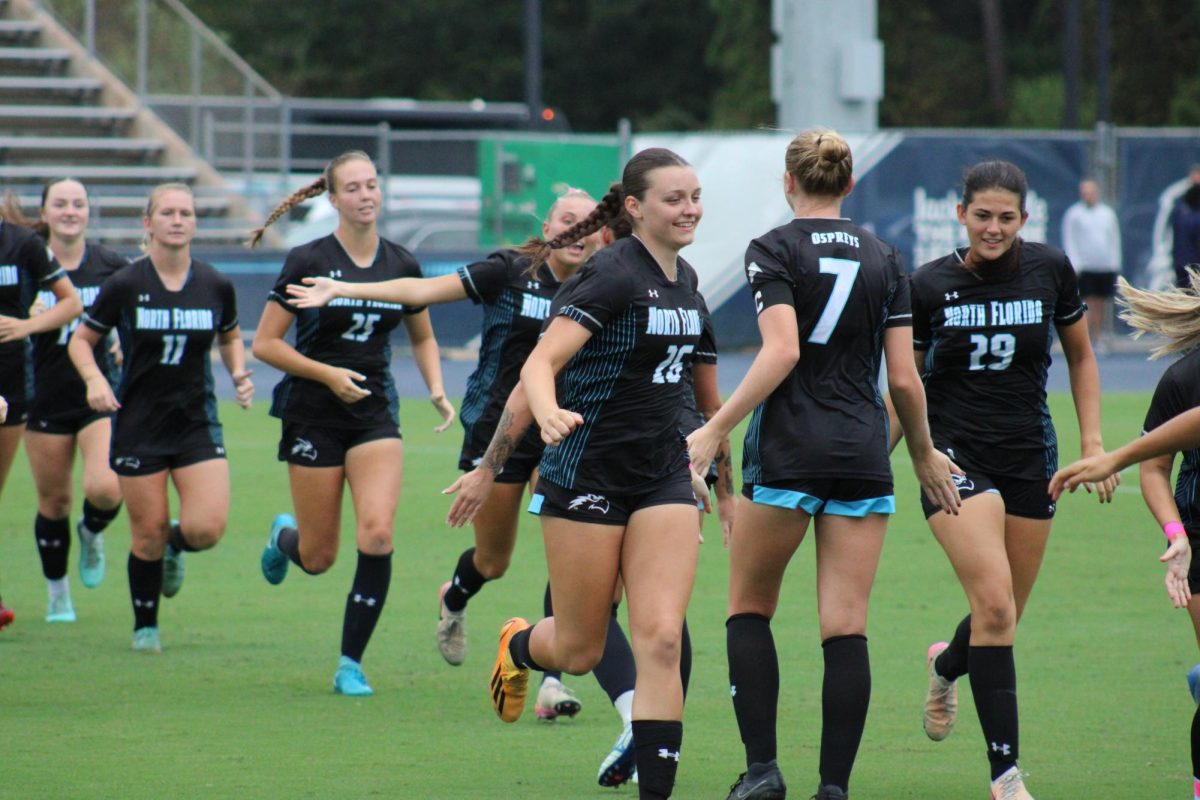
By: Dargan Thompson, Assistant Features Editor
Sometimes, in the late afternoon, students walking back to their dorms hear a flute melody, beautiful and haunting, echoing off the overhang by the UNF Housing Office. Those who hear it for the first time pause for a moment, wondering where the music is coming from. As they round the corner, they spot a figure sitting on a bench, playing a V-shaped wooden instrument.
The mysterious pied piper is John Cook, a UNF music performance and education junior, and the instrument he plays is a Native American flute.
Cook said he had been interested in playing the Native American flute since he was around 14. He said he likes studying other cultures, and, being a quarter Cherokee and a quarter Algonquin, he was interested in Native American music.
He got his first flute in his second year at Polk State College and learned how to play through online instructional videos. Once he mastered the basics, Cook started playing around campus and found people really liked it when he played. He said he likes playing outside in covered areas because of the sound he gets.
“Especially when you’re playing in a hooded area, [the sound] just kinda travels in circles around you, and it sounds and feels really awesome,” Cook said.
When Cook came to UNF last spring, he said he found university life stressful. He sat out and played his flute almost every day, sometimes even late at night, to help calm himself when he couldn’t sleep.
Now, he’s not able to play as often. His primary instrument is the bassoon, which he spends several hours a day practicing, but he still tries to get out and play his flute a few times a week.
“I feel like I should be playing more because it really relaxes me,” he said, “and I’m sure it probably relaxes people around me.”
Cook found that most people were receptive to his music. Many passersby would complement his playing, and some would even come sit and listen to him. He said he doesn’t mind when people stop to listen, but he does not like being put on the spot to perform for large groups.
Most of his music is improvised, he said. He knows a few songs, but he mainly just plays whatever comes to him.
“I’ll just pick something random out of the sky,” he said. “Like, if I see a bird flying and landing on a nest, I’ll just kind of picture it and think how would that sound musically and just kind of play from there.”
Cook said he hopes to go on to graduate school for bassoon performance, then play for operas and ballets. A bassoon is a more difficult instrument than the Native American flute but is not any more or less significant for him, and he hopes to make his flute playing more than just a hobby.
It has already opened up opportunities for him, he said. He has played for some art students, and a student rap artist once asked Cook if he would consider a mixed music record with him.
Cook’s playing is also how he first got involved with the Dagorhir club on campus. The head of the club heard Cook playing and asked him to come play during one of the club’s foam weapon fights. Now Cook usually participates in the fights but occasionally brings his flute and plays when battle tires him.
Cook said he would like to study native flute with some professional players and maybe start playing at Native American conventions, like the annual pow-wow he has attended in Polk County. He said he has seen professional drum groups at the pow-wow but has never seen a flute player.
“I think it’s a bit of a shame,” he said. “I’ve always heard that the drum is the heartbeat, but the melody is the soul.”
Email Dargan Thompson at asst.features@unfspinnaker.com.











